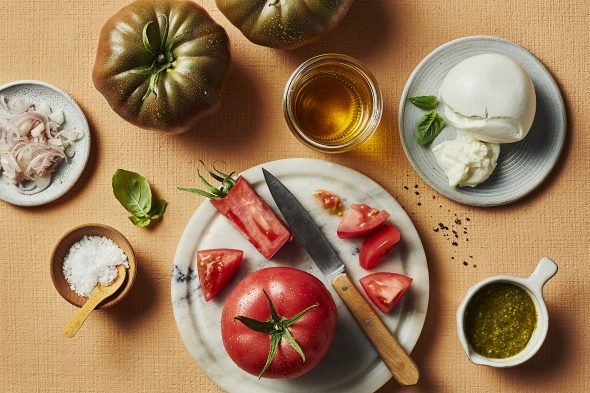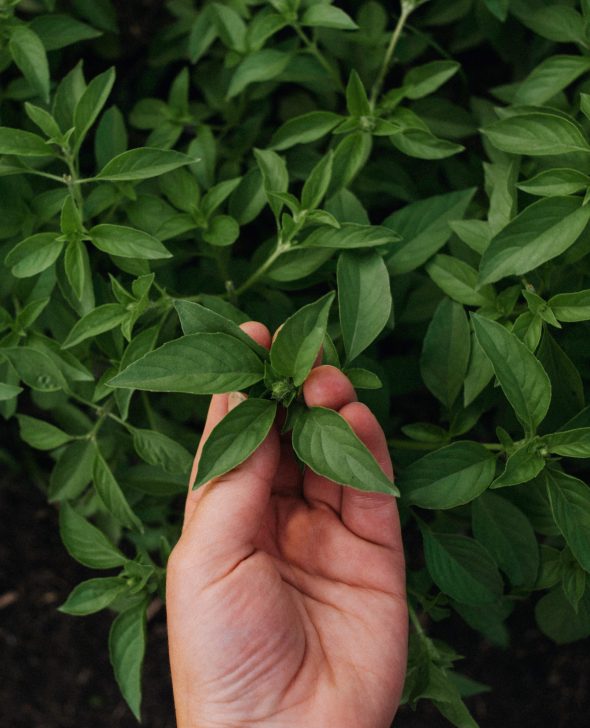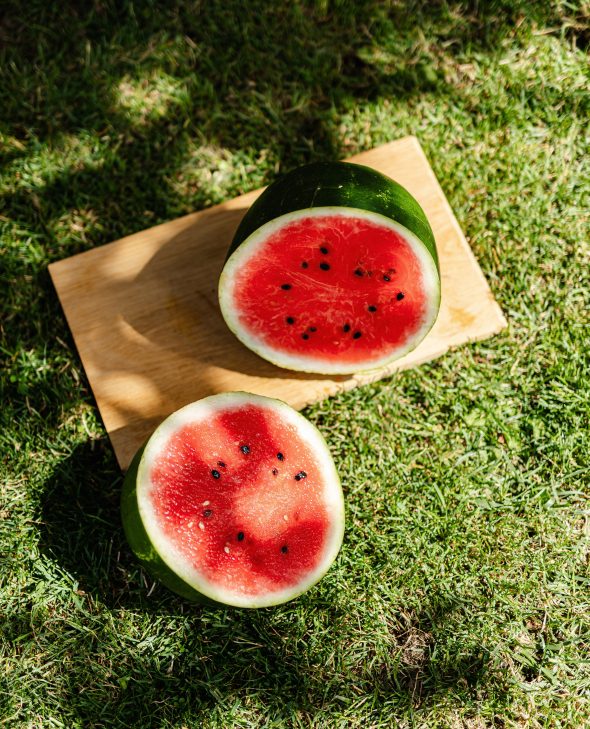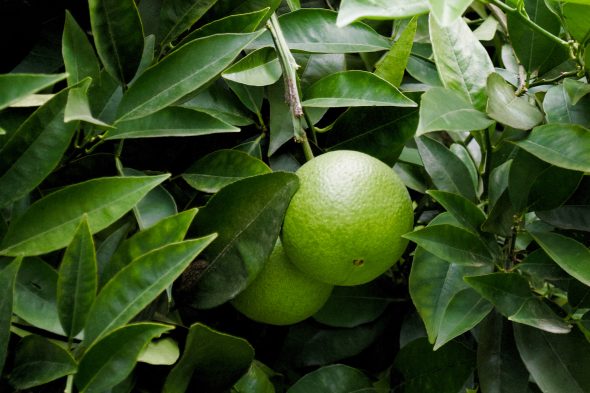The tomato’s best culinary allies
Food Lovers

Food Lovers
The tomato is one of the most popular fruit and vegetable in the world. We produce over 180 million metric tons of tomatoes per year worldwide, and it can be found in a vast majority of cooking cultures. This popularity is owed to the ease and variety of ways tomatoes can be served and the fact they pair well with a ton of ingredients.
Here are a few interesting culinary allies of the tomato, some very well known, others, a bit more surprising.
First, it’s important to understand that our experience of flavour and taste is due in large parts to our sense of smell because our taste buds are not refined enough to differentiate on their own between similar flavour profiles, for example, beef and lamb. We taste first through our eyes (colour, texture, presentation of the food) and then through our nose, both by smelling a dish and savouring it (using the olfactory receptors at the back of our nose).
Following this logic, if two foods smell good together, chances are they will also taste good together, and it is often this way that chefs start their culinary explorations when devising menus.
The great favourite and partner in crime, basil compliments the acidity and sweetness of the tomato with its bitterness and its sharp almost spicy taste. In a risotto, in caprese or in a sauce, basil and tomato always get along. Prepare your basil in a pesto that you can serve with a sliced beefsteak style tomato for a dish that is fresh and that won’t disappoint.

Cinnamon, a staple of North African cuisine – think of couscous and pastilla, for instance – works very well with tomatoes, injecting them with a touch of extra warmth and richness. To switch things up a bit, swap the sugar in your canned tomatoes for a pinch of ground cinnamon or, better yet, try your hand at lamb tajine, where cinnamon will complement the tomato, apricots, cumin, and minced onions to create a dish that’s as fragrant as it is delicious.
Nutmeg is often used in Italian cuisine, notably to temper the acidity of tomatoes in the famous Bolognese ragù, a rich meat sauce, which we wrongly serve with spaghetti in North America, whereas the Italian purists would favour tagliatelle. Nutmeg, sometimes coupled with a bit of milk, helps preserve the flavour of the meat – which is cooked for a long time – by preventing it from absorbing the acidity of the tomato juices.

On top of being a great source of lycopene (just like tomatoes!), watermelon creates delicious combinations with the tomato, notably because of its flavour which resembles that of strawberries, cucumber, and fresh herbs. We particularly love watermelon and tomatoes, coarsely chopped and served with mint leaves and a fresh, salty cheese, such as feta, prepared in a gazpacho or even in a bruschetta.

This pairing might come as a surprise; however, vanilla is often paired with strawberries, with which tomatoes share several aromatic notes. Indeed, the strawberry and the tomato, on top of having a similar texture, both contain furaneol, an organic compound that we associate with the scent of fresh pineapple. You could very well swap the strawberries in your vanilla-flavoured desserts with very sweet tomatoes, and the tomatoes in your tarts with strawberries! A hint of Mexican vanilla – from the pod – in chili con carne could also surprise and delight you!
Essentials of Mexican cuisine, lime and tomatoes are notably two of the main ingredients in the famous pico de gallo, this incredibly fresh, acidic, and spicy salsa typically served with fajitas and tacos. They can also be found in certain sangrita recipes – sometimes considered non-traditional by Mexican natives. Sangrita is a spicy beverage to accompany pure agave tequila. All in all, lime and tomato are obvious partners because they share a similarly acidic and fresh taste. They’re particularly delicious served in a salad with fresh mango and cilantro.

In short, always feel free to experiment when cooking and don’t be afraid to follow your culinary instincts and, most importantly, your nose!